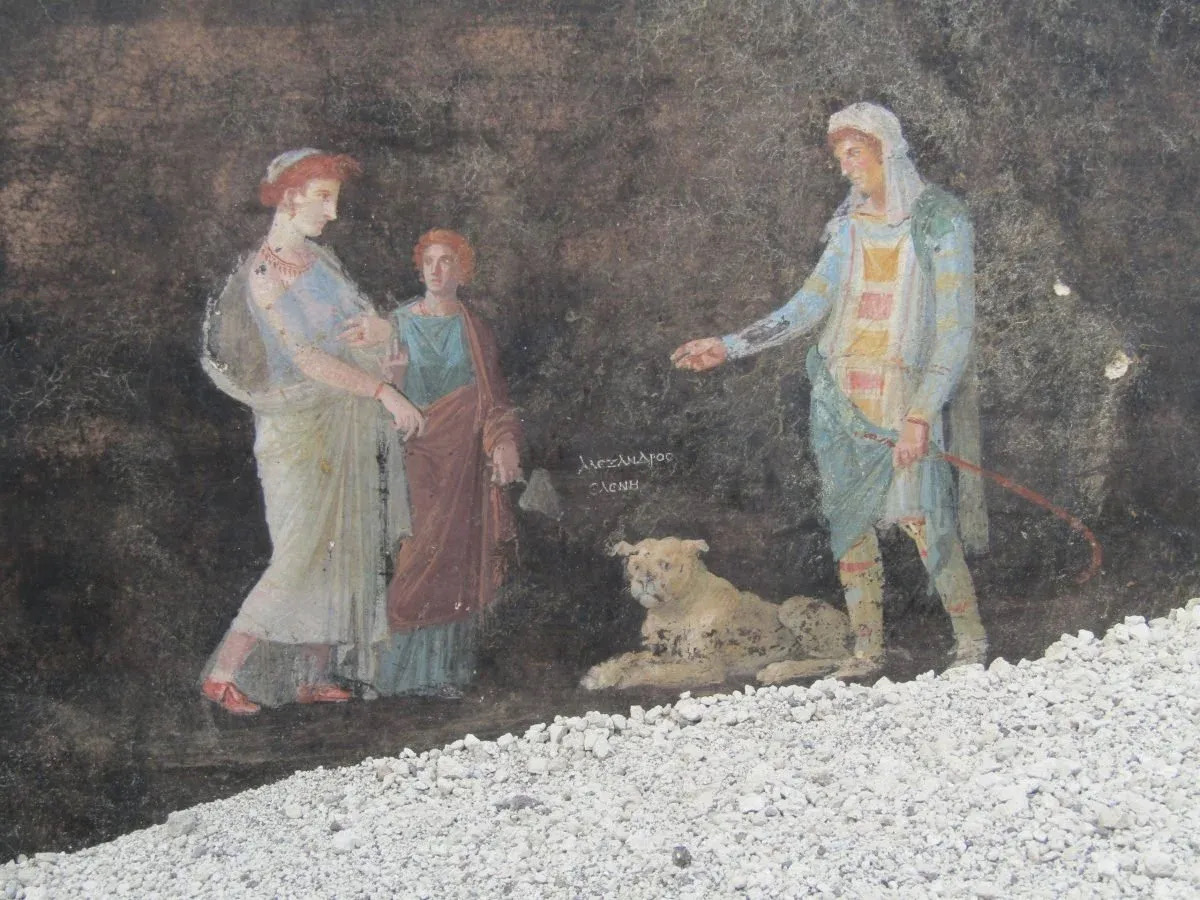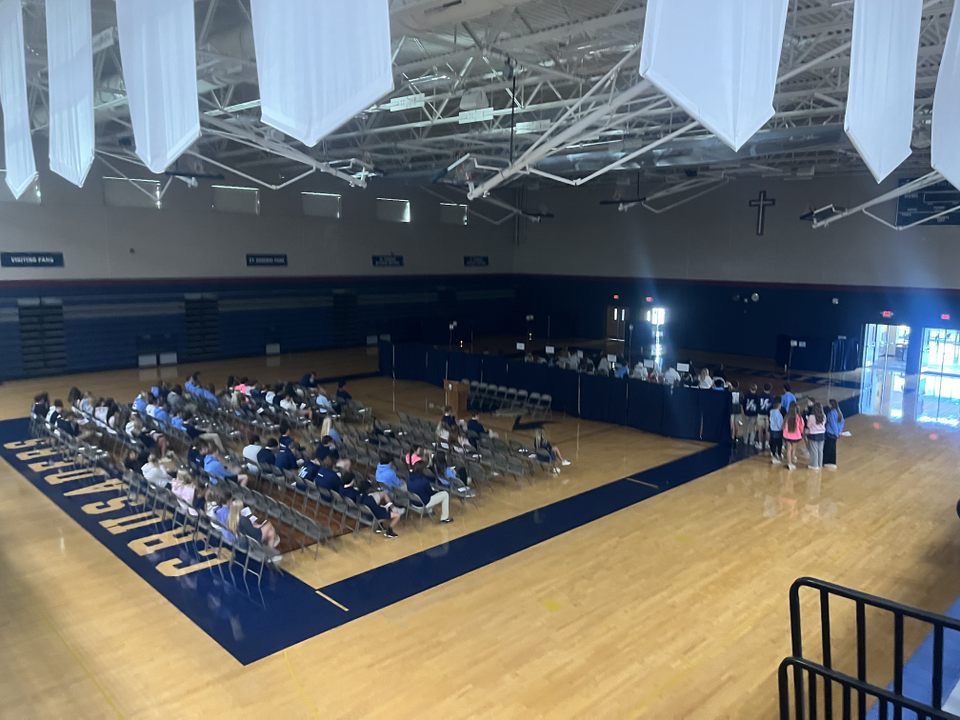Archeologists excavating Pompeii have made one of their most significant discoveries yet: a banquet hall covered in frescoes of mythological figures.
The banquet hall, which measures 49 feet long and 20 feet wide, has been nicknamed the “black room” for its black walls, a technique for disguising soot from lanterns staining the walls. Frescoes, which are watercolor paintings done on wet plaster, like these were common in entertaining spaces and were often conversation starters.
The black room is located in what archaeologists call region nine and is part of several larger discoveries. The banquet hall is only one room in a large private residence, which archaeologists theorize might have been owned by Pompeiian politician Aulus Rustius Verus based on surviving political propaganda and initials ARV found inscribed around the house.
The residence adjoins to a bakery and laundry, which were all likely owned by the same person. The bakery was connected to the house by plumbing and the initials ARV were found inside. The bakery, which included a stable, was believed to be a prison and reveals much about the brutality of Roman slavery. Inside the bakery, the skeletons of two adults and a child were found. These were the only skeletons found at all three sites.
The banquet hall is an incredibly important find because it provides a clearer look into the lives of the Pompeiians before their deaths, specifically those of the higher class citizens. More recent excavations have focused on the lives of the middle and servant classes. Archaeologists believe that the hall was likely used for refined entertainment and fine dining. As Pompeii continues to be excavated, finds like this shed light on the rich lives of its ancient inhabitants.
Arguably the most exciting part of this find are the frescoes and mosaics. While this site has been under excavation for months, the paintings were only discovered about a month ago. The frescoes depict mythological characters from the Trojan War including Helen of Troy and Paris, referred to by his Greek name, Alexandros, in the inscription. Other frescoes depict Apollo and Cassandra, as well as Leda and Zeus in the form of a swan. The frescoes were beautifully preserved with vibrant color, Greek inscriptions, and minimal chipping.
A shattered ceiling fresco was recovered from another room in the house and is being pieced back together for preservation. It depicts Egyptian characters, food, and flowers in even more vivid colors than the frescoes from the banquet hall.
The excavations of the hall were designed to better protect Pompeii as it is being restored. Extreme heat and rainfall are threatening Pompeii, which is a UNESCO World Heritage Site.
Despite its tragic past, the Pompeii site is undeniably an important piece of history. These frescoes, along with past and future archeological finds, will continue to shape our view of the past and change the way we live in the present.







